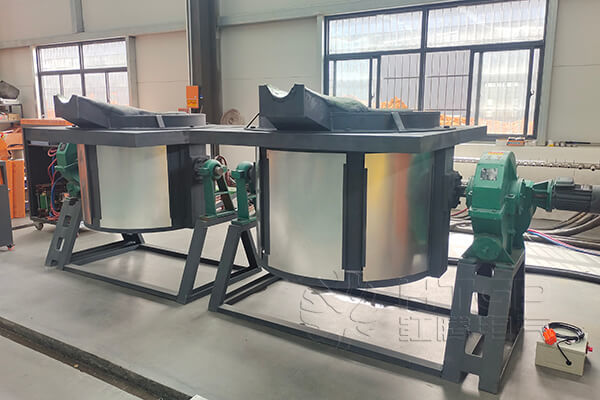articledetails
Home / articledetails

How to Adjust the Heating Speed of the Electric Induction Melting Furnace?
Generally, the electric induction melting furnace can heat the materials to 1,600°C to 1,800°C or higher. And, the heating speed is adjustable. In this article, we will introduce the maximum temperature of every type of industrial melting furnace and how to adjust the heating speed of the furnace.
Maximum Temperature of Different Furnaces
The maximum temperature of different furnaces depends on the type of furnace, the heating method, and the materials used in the furnace. Here are some examples of the maximum temperatures for different types of furnaces:
Muffle Furnace
The maximum temperature of a muffle furnace ranges from 1,000°C to 1,400°C. However, it is possible to reach up to 1800°C with specially designed high-temperature muffle furnaces.
Tube Furnace
A tube furnace generally has a maximum temperature range of 1,200°C to 1,800°C.
Box Furnace
A box furnace can usually reach a maximum temperature from 500°C to 1,800°C, depending on its size, construction, and heating methods.
Vacuum Furnaces
The maximum temperature for vacuum furnaces can range from 1,000°C to 3,000°C or above. Most vacuum furnaces used for manufacturing high-performance materials can reach a maximum temperature of over 2500°C.
Induction Furnace
The temperature range of induction furnaces is between 800°C and 2,500°C, depending on the frequency used and the materials being melted.

Electric Arc Furnace
Electric arc furnaces can achieve temperatures of up to 1,800°C to 3,500°C, depending on the materials being melted and the type of electrodes used.
Measures to Adjust Heating Speed of Electric Induction Melting Furnace
During the processing, the heating speed of an electric induction melting furnace can be adjusted by controlling some important factors in the melting process. Here are a few ways that allow you to adjust the heating speed.
Power Input Control
The most direct way to control the heating speed is by adjusting the power input to the furnace. Increasing the power input can rapidly increase the temperature and heating speed, while decreasing the power input can lower the temperature and slow down the heating speed.
Frequency Adjustment
Adjusting the frequency of the induction power supply can also change the heating rate. The higher the frequency, the faster the magnetic field changes, which leads to increased output power and faster heating.
Inductor Coil Design
The inductor coil design can also be adjusted to achieve a desired heating speed. The position of the coil relative to the material to be melted, and the size and shape of the coil itself can all influence the heating speed of the furnace.
Cooling Systems
Regulating the cooling systems of the furnace can also impact the heating speed. Ensuring that cooling systems are functioning optimally can help regulate the heat input and output, which dictates how quickly the furnace heats up or cools down.
Batch Size
The amount of the material being melted can also affect the heating speed. Smaller batches can heat up more quickly than larger ones due to the reduced volume.
Summary
In short, various factors influence the heating rate of the electric induction melting furnace. Thus, to adjust the heating speed of the furnace, you can try controlling any of the above-mentioned factors based on your specific requirements. Most industrial furnaces will also have programmable controls to allow you to set specific heating rates or temperature profiles for different materials. Regular maintenance and inspection of the furnace also help ensure optimal heating performance.
Recent Post


Induction furnaces
May 30, 2025


Causes of Argon bubble scar on the surface of continuous casting billet in MF melting furnace
May 13, 2025

Scrap aluminum smelting equipment
Apr 27, 2025

Application of induction furnace
Apr 24, 2025
Message
Contact Us
Now!
Call Us
+86-17538889778
info@lyheater.com
0086-17538889778
